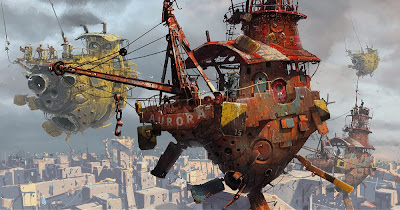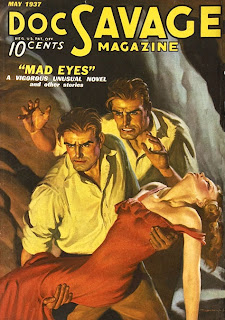 An article published by the BBC this week pays tribute to SF artist Chris Foss, who not only introduced SciFi Art Now but also influenced many of its contributors.
An article published by the BBC this week pays tribute to SF artist Chris Foss, who not only introduced SciFi Art Now but also influenced many of its contributors.The feature comes as Foss is promoting a new book about his work - Hardware: The Definitive SF Works of Chris Foss, written by fellow illustrator and top designer Rian Hughes.
Titled "What Should Spaceships Look Like" writer Virginia Brown notes that the next generation of spaceships is being conceived - and should shuttle designers take their inspiration from sci-fi illustrators?
"From Star Wars back to 2001: A Space Odyssey and even further back to comic hero Dan Dare and Victorian illustrations for the stories of Jules Verne and HG Wells, the way spaceships should look has been an important issue - before the first rocket booster ever fired," she writes. "But the fanciful reputation of sci-fi novels and films aside, the illustration of spacecraft might actually have a realistic place in the design of future vessels."
The article features many images by veteran SF illusrator Chris Foss who reveals that seeing Kubrick's 2001 made a lasting impression on his work, as did the Cold War years and the bleakness of some of the derelict areas of post-war Britain.
"People were really looking for a new kind of explosion," he says. "Humans want hope. They want something to believe in."
"An enterprising company seeking to attract government and private passengers might achieve success by offering them spaceships that resembled the unique visions of Chris Foss," says science fiction academic Dr Gary Westfahl.
"Foss made his spaceships beautiful not by streamlining them but by adding bright, decorative colours," says Westfahl.
Foss's groundbreaking and distinctive science fiction art revolutionized paperback covers in the 1970s and 80s. Dramatically raising the bar for realism and invention, his trademark battle-weary spacecraft, dramatic alien landscapes and crumbling brutalist architecture irrevocably changed the aesthetic of science fiction art and cinema.
Featuring work for books by Isaac Asimov, E. E. Doc Smith, Arthur C. Clarke, A. E. Van Vogt and Philip K. Dick, and film design for Ridley Scott and Stanley Kubrick, Hardware: The Definitive SF Works of Chris Foss brings together many rare and classic images that have never been seen or reprinted before and is the first comprehensive retrospective of the artist's sci-fi career.
The book is written by award-winning graphic designer, illustrator, font designer and comics artist Rian Hughes, noted for his work on 2000AD and Dan Dare and is also one of the many contributors to SciFi Art Now. His illustration work is highly distinctive, wearing its design influences on its sleeve.
• Read the full article here on the BBC News magazine web site
• Chris Foss Official web site: www.chrisfossart.com







